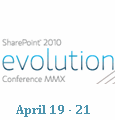8 Reasons You Should Consider Automatic Classification and Automatic Metadata Tagging in SharePoint
 Guest Author: Juan J. Celaya
Guest Author: Juan J. Celaya
COMPU-DATA
It should not be of great surprise to anyone that Microsoft’s plan for SharePoint is to provide the foundation for access to all information in the enterprise. With SharePoint’s tightly coupled integration with the Office product, SharePoint’s popularity in collaboration and openness for developers and integrators, SharePoint is positioned to touch every single byte in your corporate network.
Therefore based on what SharePoint’s future looks to be the importance of being able to properly manage your data within SharePoint is very important. So, are you having problems in the areas below? If you are, then you seriously need to stop relying on your users to tag your content.
- Inability to find relevant and precise information using search
- Organization of content from diverse repositories in a single interface
- Enforcing corporate governance to apply metadata to all content that is created
- Continually struggle with managing an ineffective Records Management process
- Reducing the costs associated with eDiscovery and litigation preparedness
- Privacy data or confidential business information may be exposed on unsecure servers or repositories
Term definition – A digital asset in this document is defined as a document, electronic file, database record or any electronic information with textual content that is stored or accessible by a computer.
1 — Corporate Metadata.
Of course, this is the foundation to your implementation. You may already have it and don’t know it — your corporate taxonomies are your Corporate Metadata! Yes that’s right. Use your company’s hierarchical classification of its terms of interest to tag all the digital assets in your SharePoint system.
2 — Forget about manually tagging.
First ask yourself how well has manual tagging worked and be objective in your answer.
- Have you been able to get two or more people to agree on the same metadata for the same digital asset?
- How much time are you willing to spend forcing people to enter metadata vs. doing their job?
- How can people in one department know if a specific digital asset is important for people in another department?
- Can you guaranty that all digital assets are being tagged according to corporate governance policies?
- Is a person really objective when deciding on what tags to use?
- How many tags do you require today and how many tomorrow?
- How many SharePoint templates are you willing to administer?
I can go on and on with questions but the best one is – As your business changes how are you going to retag your existing digital assets? The bottom line is that as much as we would like for the users to tag digital assets we can’t ensure it is happening properly or happening at all.
3 — Automatically tag your SharePoint library’s content.
Let me agree with the fact that this method is not perfect but I believe it is much better than manual tagging. An automatic process will get you a long way to your goal and with the proper implementation and the use of your corporate taxonomies you can tag, in an objective manner, your digital assets using their content as the basis for applying the rules.
4 — Let your automatically generated metadata drive your SharePoint Content Type.
Would you like to automatically update SharePoint Content Types based on the presence of corporate defined metadata that has been automatically tagged to digital assets contained in SharePoint? This functionality exists and enables organizations to effectively process all digital assets in accordance with information management, records management and data privacy and security standards.
For instance, use this technique to identify digital assets with Personally Identifiable Information (PII) and Protected Health Information (PHI) that have not been assigned the correct content type. When information such as a social security number is identified within the content of a digital asset the Content Type is automatically changed. You can then take the next step and lock the item down in the MOSS Records Center and make it available to selected users using Windows Rights Management for further disposition and analysis.
5 — Create Data Transparency and share the knowledge.
By having digital assets tagged with different corporate metadata and with the appropriate security, digital assets can be delivered to the desktop through RSS feeds or accessible through the user’s knowledge of the terms used on a daily basis.
Remember that:
- Untagged, improperly tagged and not fully tagged digital assets equal “Untapped Resources”
- The Time Gap between Information Requests and Discovery is Directly Proportional to the Volume of Digital Assets
6 — Drive Records Management.
Your Record Policy is implemented by tagging digital assets with Record Policy Codes – aka metadata! This means that Records Management can automatically apply corporate Record Retention Schedules to all digital assets in SharePoint and shush – don’t tell anyone but it can also be done for those outside of SharePoint.
7 — Improve Search Precision.
How so? You ask. The obvious answer is that you are adding metadata that is commonly used within your organization to every asset and this metadata is indexed. Therefore when searches are done people use the common terms of the organization and more precise hits are returned.
8 — What if I am wrong?
I had a conversation a while back with the head of a records management organization responsible for records across the world. His problem is that despite of the very strict policy that every digital asset must be tagged, users are not tagging them or worse they are tagging them with the first thing that comes up on the screen regardless of its relevance to the digital asset. In reviewing the automatic metadata tagging concept he stated that if he could get a 50% tagging ratio based on the established rules he will be 50% closer than right now.
I told him that consistency was the biggest advantage of this method. Once the rules are defined that drive the tagging process the rules are enforced equally across the organization and if the rules are wrong they are changed and again equally applied across the organization.
This article was originally posted on AIIM President John Mancini’s Digital Landfill blog which contains links to many other “8 things” articles. Some of the 8 things articles have been published as a series of free e-books, available at http://www.aiim.org/8things.
 Guest Author: Juan J. Celaya
Guest Author: Juan J. Celaya
COMPU-DATA
Juan J. Celaya founded COMPU-DATA International, LLC in 1988 and has been successfully delivering “Content and Data Integration” solutions for ECM implementations through the use of capture, administration, collaboration, retrieval technologies and solutions. Juan has a broad Information Technology background covering 30 years of experience with successful system implementations with Energy, Healthcare, Pharmaceutical and Transportation companies, the U.S. Department of Defense and the National Nuclear Security Administration. Juan can be reached via e-mail at [email protected] and can also be found on LinkedIn & Twitter.
- 8 Things You Need to Know about SharePoint Governance
- 8 Things SharePoint 2010 Needs to Be a True ECM System
- 8 More Things You Need to Know about SharePoint
- 8 Things to Consider when Implementing SharePoint with Another ECM engine
- 8 Ways to Use SharePoint for Social Computing
- 8 Reasons You Should Consider Automatic Classification and Automatic Metadata Tagging in SharePoint
- 8 Ways SharePoint Helps in Enterprise Governance, Risk and Compliance
- 8 Things to do to Make Content More Findable in SharePoint





